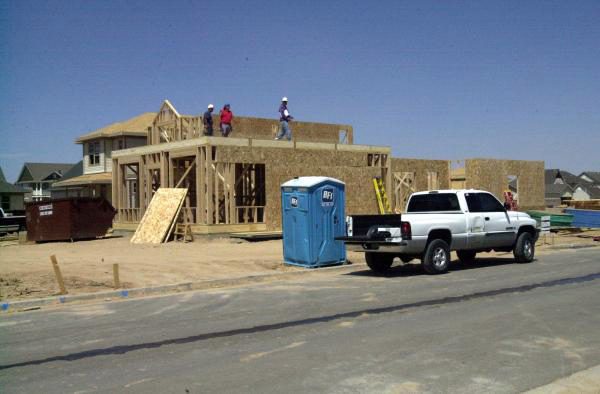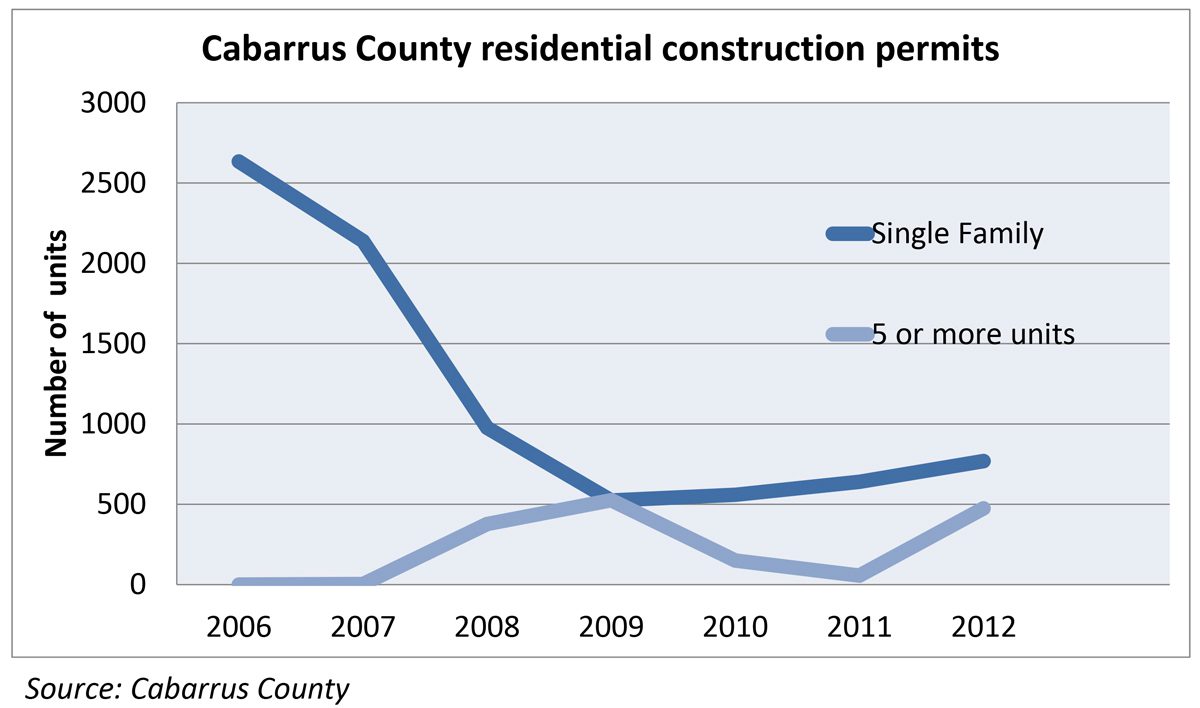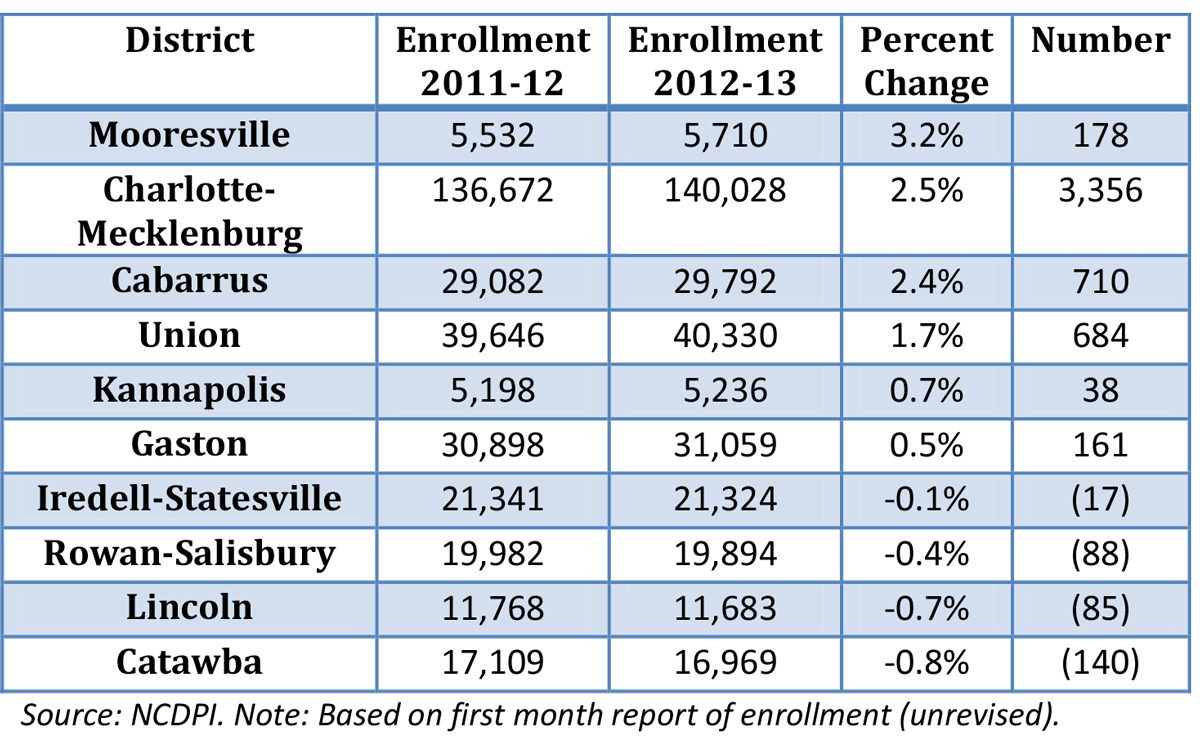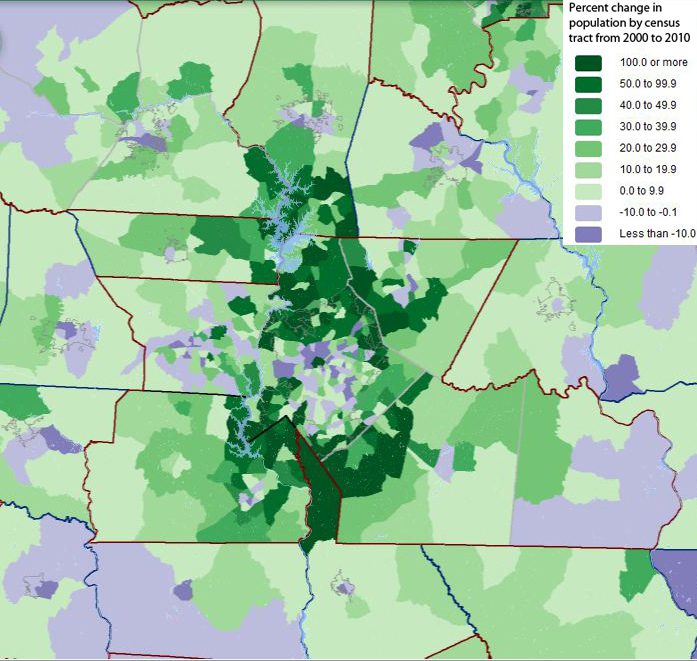Is the Charlotte region ready for another boom?

Times have been tough in the local economy, but it looks as if we’ve finally turned the corner. If growth is starting to make a comeback, exactly where will it be? Is your county ready?
In the 2000s growth in the Charlotte region was surging, with the Charlotte MSA* the sixth fastest in population growth in the country during that decade (based on the 2009 estimates of population). Union County was the fastest growing county in North or South Carolina in the 2000s with population growth exceeding 60 percent during the decade.
All this population growth was accompanied by regular announcements of large subdivisions (often with 100 or more lots each). Most of that construction came to an abrupt end with the Great Recession.
Now, looking back, the patterns of all that growth can be seen in fairly concentrated areas mostly north and south of Charlotte (see map below).
If your jurisdiction contained one of these growth hot spots, your county made it into the high-growth category. Lancaster County, S.C., is a good example of that trend. The Lancaster County panhandle reaches up to the fast-growing Ballantyne area in south Charlotte. Growth in and around Indian Land in Lancaster County’s panhandle pushed that county’s overall growth rate for 2000 to 2010 to more than 20 percent. Union County, bordering Charlotte’s home county to the southeast, shows intense population growth at the Mecklenburg County border, but much lighter growth in the more rural, eastern parts of the county.
|
More information |
Local officials from throughout the Charlotte region still remember the downsides of growth. For many county governments in the region, population growth meant rapid school enrollment increases and the daunting task of paying to build schools to house the wave of new students.
After several years of very low activity, housing permit data from several parts of the region indicate the bottom may have finally hit in housing. The graph below shows permits in suburban Cabarrus County. Construction there fell off a cliff in 2007, but by 2012 permits finally begin to increase. Mecklenburg shows a similar pattern in single family permits.
Also of note in Cabarrus County are requests to alter previously approved developments to smaller lots with smaller homes, and signs that larger, single-family residential projects may be returning. The rebound of apartment permits (shown as five or more units in the graph above) is not just limited to Cabarrus County, but has occurred in other areas as well. Jurisdictions with zoning for multifamily are naturally more urban in nature, which may help explain recent data showing more growth in Charlotte’s urban core compared to suburbs. While this points to strength in urban centers, builders and developers have also highlighted specific areas of increased demand for new suburban residential construction.
Representatives from M/I homes were recently quoted in the Mecklenburg Times on areas they see as emerging hot spots for growth. “Huntersville and other north Mecklenburg County areas, the racetrack area of Cabarrus, close-in Gaston (County), and Mooresville in Iredell County. In fact, [Tamara] Lynch (vice president of sales and marketing for M/I Homes’ Charlotte division) said, ‘M/I will turn much of its attention more toward land development this year, some of it in Mecklenburg but much of it outside the county.’” (Click To Read The Full Article – subscription required).
One of the most direct effects on local government is school enrollment. Generally, enrollment growth has slowed dramatically along with housing construction, but there are signs of a turnaround there, as well. Recent data from local school districts show how these new, emerging hot spots may affect local counties in the region. Of the N.C. districts in the immediate Charlotte area, several showed growth from the previous year (graphed below from highest to lowest percent change).

These enrollment increases are substantial enough in Charlotte-Mecklenburg, Cabarrus and Union to start squeezing capacity. The fact that growth is typically concentrated contributes to the challenges for local boards of education and county commissioners (who must find the money to build schools) to respond. If growth and construction continues, other areas could also see strain in their school facilities, especially in eastern Gaston County and Mooresville.
Although many will see increased growth as a welcome sign of better economic times, several counties in the region are still too burdened with debt issued to cover the last wave of growth (particularly school bonds). All it took in the 2000s was one hot spot of population growth to cause consequences like large school bond debt. Is your county ready to handle the next wave?
*The Charlotte-Gastonia-Concord Metropolitan Statistical Area is comprised of the following counties: Anson, Cabarrus, Gaston, Mecklenburg, Union (all in N.C.) and York, S.C.
